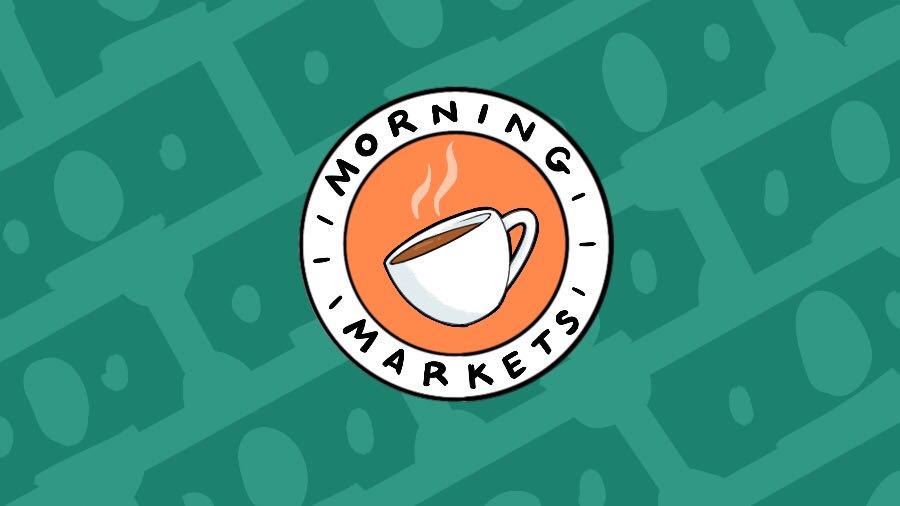Morning Markets: Patreon is a neat company that’s growing. But how much, and how quickly?
There’s no point in pretending that the idea of Patreon isn’t neat. By collecting supporters for an artist, or publication, or group in one place, Patreon is building a paid platform to support creativity. It’s a good idea, even if the company’s business choices have at times attracted user blowback.
As a private company, Patreon has been effective at attracting private capital. The startup has raised just under $166 million according to Crunchbase data. Its investors include Index Ventures, Hannibal Buress, Freestyle Capital, and Thrive Capital.
Subscribe to the Crunchbase Daily
This week Patreon announced two milestones that caught our eye, namely that it now has 4 million active patrons (folks paying for stuff on the site), and that the startup has now paid out $1 billion to users of its service. Neat, but, what’s the curve on those charts?
Looking Backwards
Let’s examine the record and find some other milestones that Patreon has announced over time. We’ll start with active paying customers (patrons):
- May 2017, 1 million patrons (source)
- May 2018: 2 million patrons (source)
- January 2019: 3 million patrons (source)
- November 2019: 4 million patrons (today, natch)
There’s acceleration there of a sort. Patreon took around a year to add 1 million patrons from May of 2017 to May of 2018. Then it required less than a year to get another million. Most recently it took around nine months for the firm to reach 4 million from three. Maybe.
The issue with milestones of this sort is that they are rarely announced when they actually happen; they’re announced when it makes sense for a company, and as Patreon tends to bundle its metrics-related announcements we can’t be clear on when it reached actually the specific marks.
That said, it’s fair to guesstimate that Patreon has seen a moderate acceleration in the pace at which it adds active patrons since 2017. That’s good for the company and good for its users, as the patrons are spending more over time:
- $150 million paid out in 2017 (company estimate, source)
- $300 million paid out in 2018 (company estimate, source)
- $500 million paid out in 2019 (company estimate, source)
Patreon has also announced various cumulative results, including $350 million in payouts when the company turned five. The new $1 billion figure fits inside this context.
Revenue
Patreon announced a new set of pricing options earlier this year, which it intends to offer to new users (creators) who sign up for its service. Old users will keep their former pricing.
This makes it hard to estimate the company’s revenue. However, the firm’s old method was a flat 5 percent while the new tiers have higher-cost options. You can quickly do the math based on how high you want to push up your estimate of the company’s take rate. For example, at 6.5 percent, the company’s expected $500 million in platform spend works out to $32.5 million in 2019 revenue.
Patrons are, in a way, a proxy for Patreon platform spend. But we also have to consider whether rising fees for new users will help accelerate growth or leave them searching for a cheaper alternative where they bring home a larger share of their revenue.
We’re curious to see if Patreon has the ability to scale to IPO size. More and more people are using the service to make money from their podcasts, videos, and articles. But will the company be able to get enough creators on board with Patreon, and get enough people to pay for their services, to reach sufficient IPO size at a growth rate that attracts new investors? Patreon’s revenue depends on the public’s willingness to pay for content, after all; that is a proposition that was out of favor some years ago. Though, Patreon has pushed back against the narrative by continuing to grow.
There’s also the question of whether public markets will understand the company. Patreon combines the characteristics of crowdfunding, memberships, social media, and community into an interesting conurbation. It has a membership model that works to gather payments from a group of people with a similar interest. How will Wall Street respond to such a hybrid?
And if Wall Street embraces it, we also have to wonder how recession-proof the model will prove. Patreon caters to artists and creators, but unfortunately, when money gets tight, people may cut their payments for entertainment and interests first.
It’s unclear how many patrons the company needs to go public. Patrons can set different rates for their content, so how much money the company makes depends on how money each patron is pulling in and how many patrons it has.
The sentiment lately has been that money-losing, high-growth startups are out of favor. This particular startup is gaining popularity among users, so only time will tell if investors feel similarly.
Illustration: Dom Guzman

Stay up to date with recent funding rounds, acquisitions, and more with the Crunchbase Daily.



![Illustration of a guy watering plants with a blocked hose - Global [Dom Guzman]](https://news.crunchbase.com/wp-content/uploads/quarterly-global-3-300x168.jpg)
67.1K Followers